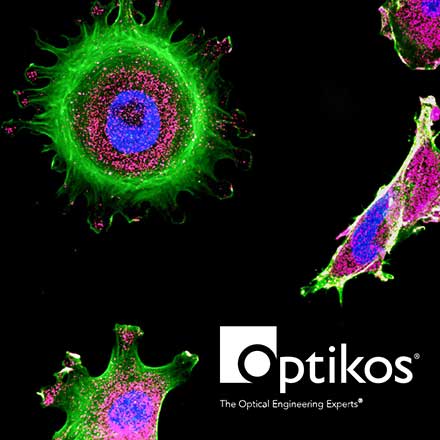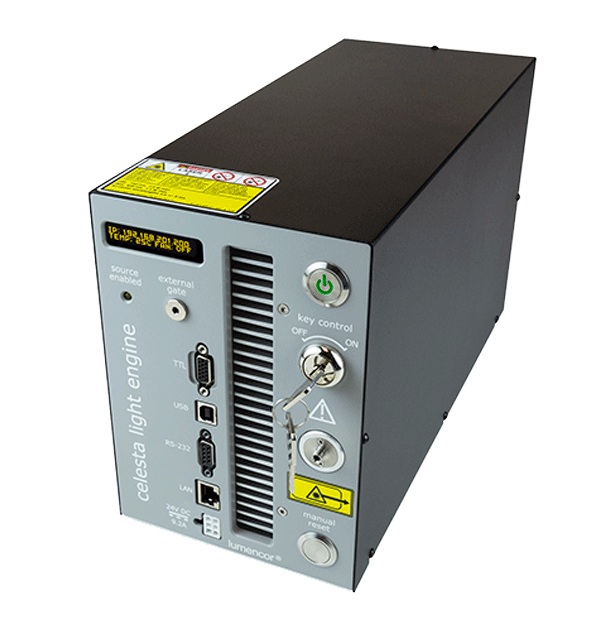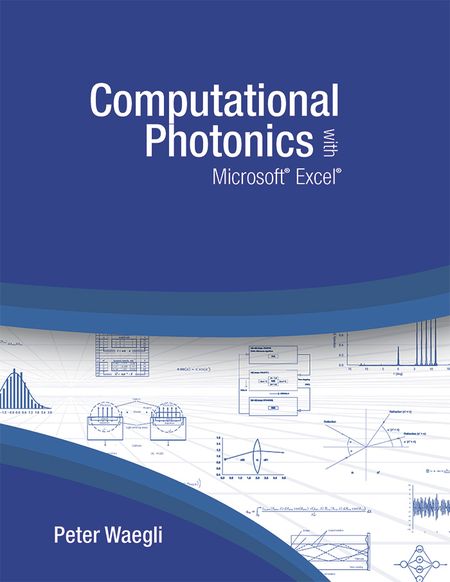Monthly newsletter focusing on how light-based technologies are being used in the life sciences. Includes news, features and product developments in lasers, imaging, optics, spectroscopy, microscopy, lighting and more. Manage your Photonics Media membership at Photonics.com/subscribe.
|
|
|
|
sponsor
|

|
|
NIR-II Looks Deep into the Research Realm
In vivo imaging in the second near-infrared biological window is in its early stages but will undoubtedly affect life science research on many levels, both in preclinical and clinical work and in universities and medicine. Research in biology and medicine will be fundamentally changed.
|
|
|
|
|
|
Diffuse Optics Filters Diagnoses
Diffuse optics and the study of light absorption and scattering in various tissues can track blood oxygenation and other factors that help assemble an accurate medical diagnosis. Light scatters multiple times when traveling through a thick tissue sample, hence the “diffuse” property of this technique. Diffuse optical imaging has been shown to be a reliable measure for evaluating the health and outcomes of patients undergoing cardiac surgery, metabolic treatment, and tests for cancer. Breast cancer, in particular, has been both a tangible and virtual target for these techniques.
|
|
|
|
|
|
Light Brings a Delicate Touch to Treatment
Almost as soon as the first working laser was built in 1960 by Theodore Maiman, reports from users of lasers multiplied regarding the curious effects that light can elicit on living tissue. In 1962, dermatologic surgeon Leon Goldman reported the successful laser removal of unwanted skin markings, specifically tattoos. Fast forward to today, and similar techniques are used to erase birthmarks and pigmentation as well.
|
|
|
|
|
|
 Light Sheet for Cleared Tissue
Light Sheet for Cleared Tissue
Applied Scientific Instrumentation Inc.
A flexible and easy-to-use SPIM configuration optimized to image large cleared samples. The sample is mounted horizontally on an XYZ stage. Two multi-immersion objective lenses are held in an upright “V” geometry for light sheet illumination and detection.
Visit Website
Request Info
|
|
|
 Engineering Services for Life Sciences
Engineering Services for Life Sciences
Optikos Corporation
From concept to volume production — you can do it all with Optikos. Decades of service in the optics industry have given us a proven track record of innovative and practical problem solving that serves the development needs of a diverse portfolio of life sciences clients.
Visit Website
Request Info
|
|
|
|
|
|
 CELESTA Light Engine
CELESTA Light Engine
Lumencor Inc.
Lumencor’s Celesta Light Engine delivers exceptional brightness and speed. This laser-based, solid-state illuminator is designed to support today’s most demanding multidimensional fluorescence microscopy applications.
Visit Website
Request Info
|
|
|
 Computational Photonics with Microsoft® Excel®
Computational Photonics with Microsoft® Excel®
Photonics Media
This book shows how Excel — readily available on almost every computer — can be used to study photonics problems and to design, analyze, and optimize photonics applications. Excel comes with all the necessary ingredients: a full range of mathematical functions, excellent graphics and user-interface...
Visit Website
Request Info
|
|
|
|
|
|
SCAPE Microscopy Captures Image of Odor Detection
The olfactory system that lets mammals detect and identify odors starts with a wide array of G-protein-coupled receptors, which are located on olfactory sensory neurons that comprise the olfactory epithelium, a thin layer of tissue deep within the nose. This network has the capacity to identify and respond to the host of odors that mammals, including humans, come across every day.
|
|
|
|
|
|
An international research team from Jena, Munich, and New York has used photopharmacology — the use of light to switch the effect of drugs on and off — to control actin, a component of cells that was previously considered inaccessible.
|
|
|
|
A physician from Florida Atlantic University’s Schmidt College of Medicine and collaborators from the University of Arizona College of Medicine-Tucson and the Indiana University School of Medicine have discovered the presence of fluorescent solution on personal protective equipment (PPE), indicating an exposure to COVID-19.
|
|
|
|
LED Lighting for Fluorescence Microscopy: A Sustainable Illumination Option
Tue, Sep 22, 2020 10:00 AM - 11:00 AM EDT
This webinar, presented by Excelitas Technologies, will present the recent advancements in LED technology that have created an opportunity for LEDs to replace arc lamps for a variety of fluorescence imaging applications. Presenter Kavita Aswani, Ph.D., will address the development of high-power LEDs for the green excitation range, a wavelength that has traditionally been challenging for LEDs. She will also discuss the many advantages of using LEDs for microscopy systems in life sciences, including sustainability.
|
|
|
|
Features
Lensless Microscopy, Quantum Dots, Multimodal Imaging, and more.
Photonics Media is currently seeking technical feature articles on a variety of topics for publication in our magazine BioPhotonics. Please submit an informal 100-word abstract to Senior Editor Doug Farmer at [email protected] or use our online submission form www.photonics.com/submitfeature.aspx.
|
|
|
|